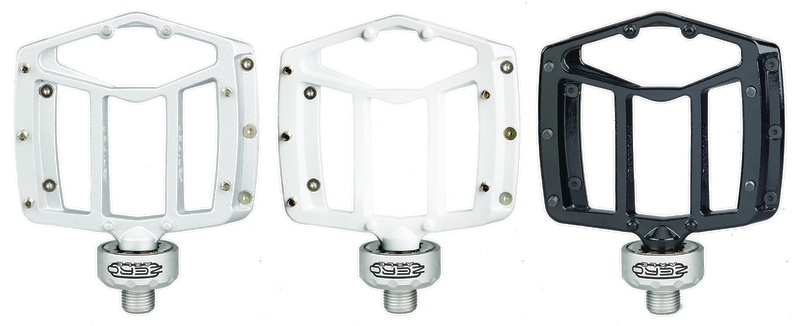
Looking to capitalize on the current trend of making the thinnest pedals possible, Tioga recently unveiled the new MT-Zero flat pedal. For most manufacturers the limiting factor for getting the pedal as thin as possible, has been the the axle of the pedal itself in the center of the pedal. While some companies have gotten around this by switching to bushings, or tiny needle bearings, Tioga is implementing what they call the ZEROaxle. The result: a super thin pedal that measures no more than 7mm thick at the fattest point, that still offers a dual concave shape.
Jump past the break for more on the MT-Zero!

The secret to the MT-Zero’s ability to work without an axle so to speak, is the ZEROaxle bolt that houses the main bearing. ZEROaxle’s cartridge bearing is more than twice the size and capable of handling over five times the dynamic load of typical bearings which is necessary due to the load being placed all at one point, rather than spread across the pedal. The ZEROaxle bolt is fully replaceable as well, so if you damage the actual pedal, or blow out the bearing, you should still be able to rebuild your pedal.

At this point some of you may be thinking, “haven’t I seen this before?” The answer is yes. Sort of.
A while back, what was and still is, the thinnest pedal available was introduced called the FlyPaper pedal. While no doubt serving as a large inspiration for the MT-Zero’s design, the FlyPaper had one major drawback – it required a special crank. Currently, the FlyPaper pedals are sold as a package with a Gravity Crank included that has been modified to run the pedals. The obvious advantage of the new MT-Zero pedals, is that due to their standard 9/16th threaded bolt, you can run the Tiogas on any standard crank.
Unlike the Flypaper pedal, the MT-Zeros retain a concave platform that measures around 4mm in the center and flares to 7mm at the ends. The MT-ZERO’s body is constructed of a one piece, investment-cast chromoly steel platform, that has been tested for anything from XC to all-mountain.Tioga claims the MT-Zero pedals weigh in at 450 grams per pair, and should be available shortly after Interbike at a suggested retail price of US$99.